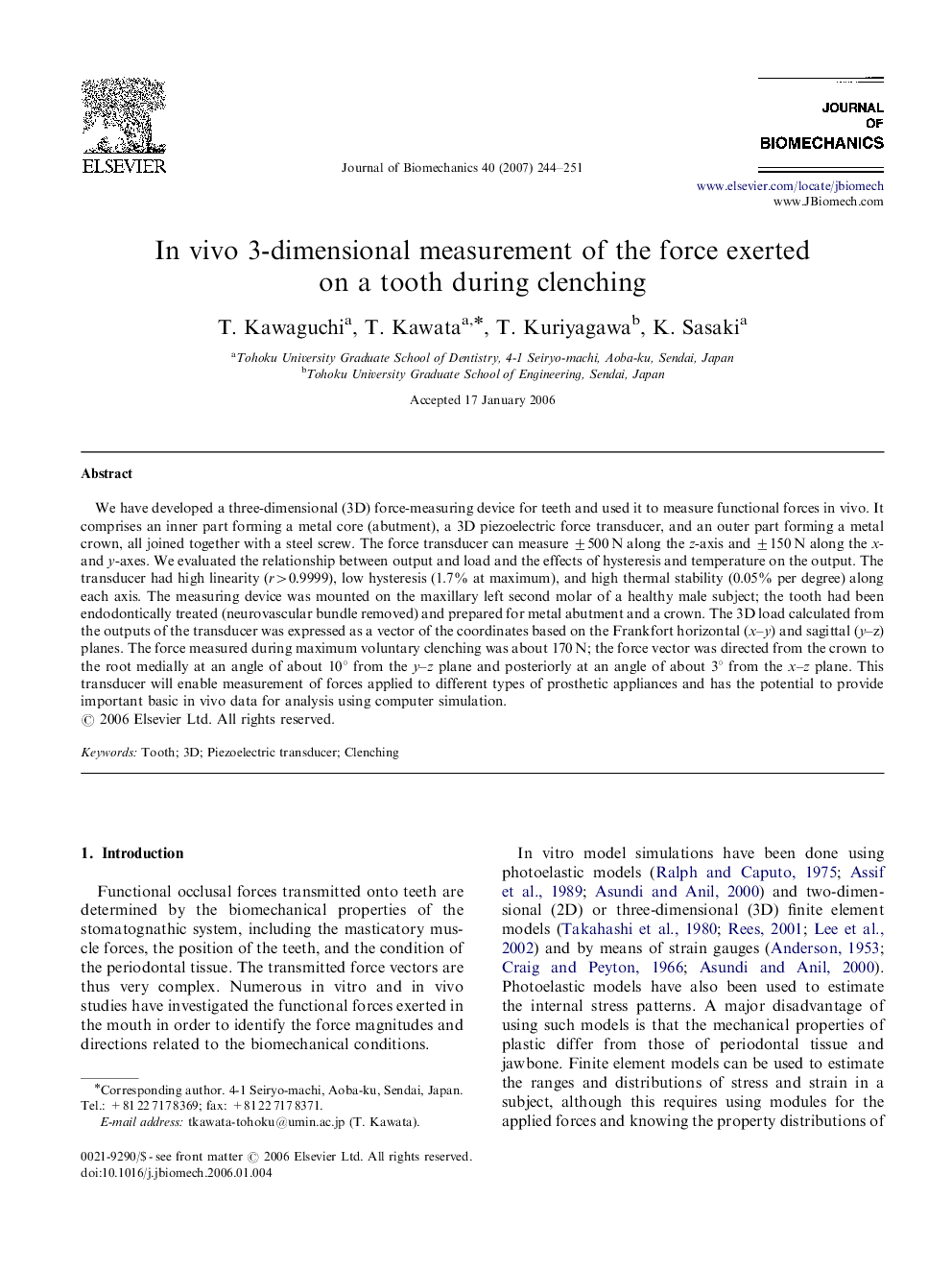| Article ID | Journal | Published Year | Pages | File Type |
|---|---|---|---|---|
| 874793 | Journal of Biomechanics | 2007 | 8 Pages |
We have developed a three-dimensional (3D) force-measuring device for teeth and used it to measure functional forces in vivo. It comprises an inner part forming a metal core (abutment), a 3D piezoelectric force transducer, and an outer part forming a metal crown, all joined together with a steel screw. The force transducer can measure ±500 N along the z-axis and ±150 N along the x- and y -axes. We evaluated the relationship between output and load and the effects of hysteresis and temperature on the output. The transducer had high linearity (r>0.9999)(r>0.9999), low hysteresis (1.7% at maximum), and high thermal stability (0.05% per degree) along each axis. The measuring device was mounted on the maxillary left second molar of a healthy male subject; the tooth had been endodontically treated (neurovascular bundle removed) and prepared for metal abutment and a crown. The 3D load calculated from the outputs of the transducer was expressed as a vector of the coordinates based on the Frankfort horizontal (x–y) and sagittal (y–z) planes. The force measured during maximum voluntary clenching was about 170 N; the force vector was directed from the crown to the root medially at an angle of about 10° from the y–z plane and posteriorly at an angle of about 3° from the x–z plane. This transducer will enable measurement of forces applied to different types of prosthetic appliances and has the potential to provide important basic in vivo data for analysis using computer simulation.
